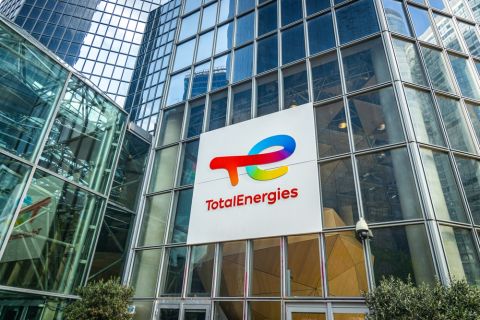Dramatic falls in the oil price late last year took most people by surprise, including many in the oil and gas industry.
In some quarters of the media and government, excitement about the rapid development of Australia’s liquefied natural gas (LNG) industry has been replaced by dismay.
But successful oil and gas companies know that prices can go through periods of volatility and their project plans and budgets allow for this. Successful players in the oil and gas industry operate in timeframes of a decade or more, taking into account a wide range of possible crude prices, economics and policy developments. Short-term fluctuations don’t affect major planning decisions.
Yes, LNG prices are linked to the oil price. But fluctuations in the oil price mainly affect the spot market. Most LNG cargos are not sold through the spot market. They are sold via long-term fixed-price contracts that typically cover periods of 10 to 20 years.
Setting LNG prices in this way protects both producers and customers from price volatility. This reflects the long timeframes that LNG developers and customers plan for. These projects are designed to last for at least 20 years.
For example, Western Australia’s North West Shelf LNG has been exporting LNG since 1989—more than 25 years.
For most of that time—from 1989 until 2005—oil prices have been lower than they are today.
Throughout this period, not only did the North West Shelf LNG project remain viable but its owners invested billions to more than double its production capacity. During this same era, a consortium of six companies invested in the Darwin LNG project, which has been successfully exporting gas since 2005.
Of course, the falling oil price will have an impact on government and company revenues. In the short term, governments will receive lower tax and royalty returns from these projects.
But sensible governments view returns from these developments over long-term project lives and don’t get alarmed about short-term revenue fluctuations. They know that the industry needs a stable government fiscal regime for the long-life of such projects.
Companies are already cutting costs and deferring some projects. There will be pain, but the cost-cutting will have long-term benefits. Companies will emerge from it leaner and stronger.
And our industry has a strong history of responding to pressure by delivering new efficiencies through technological innovation. It’s likely that some new tools and techniques will be developed in the next few years that will make the industry more efficient and make exploration and production more cost-effective.
But before we look ahead, let’s examine how we got to where we are today. Why has the oil price dropped so precipitously?
Basically, demand has remained steady, but we now have a supply glut.
Developing onshore shale oil fields has greatly increased U.S. oil production in recent years, and OPEC has refused to cut its production in response.
This is a war over market share, driven largely in the minds of some by Saudi Arabia, which is aiming to make it uneconomical for the U.S. to maintain its current levels of oil production.
Just a couple of years ago, peak oil doomsayers were warning that oil prices would keep rising. Just as those fears were overblown, expectations that the oil price will remain low indefinitely are also unrealistic.
Like any industry, the oil and gas sector responds to price signals. Companies are moving to cut costs. Drilling and exploration is now being wound back in many parts of the world.
But it is perhaps the onshore U.S. that will have the most influence on prices in the near-to-medium term.
On 3 February, the Australian Financial Review reported that U.S. drilling activity has slowed, both offshore and—especially—onshore. By June of this year, the number of rigs deployed in onshore U.S. fields could have dropped by as much as 40 per cent in 12 months.
Most onshore U.S. oil production is now from shale fields, which can be appraised and developed more quickly than conventional oil fields. But these fields also decline more quickly than conventional ones.
With onshore U.S. drilling declining, we can expect that U.S. oil production will soon level off and eventually decline.
In the longer term, the deferral of many conventional oil developments and exploration programs means that within a few years oil production will decline in other parts of the world. Inevitably, declining production means prices will once again rise.
When that happens, APPEA wants the Australian oil and gas industry to be well positioned to take advantage of the opportunities that will emerge.
This is a good time to look at fundamentals. That means not only cutting costs within the industry, but also finding ways to reduce the regulatory burden so that companies can be timely in adjusting their exploration and development programs.
Recommended Reading
Hess: Pre-emption Provision Doesn't Apply to Buyout Deal With Chevron
2024-02-27 - Hess Corp. said on Feb. 27 that a pre-emption provision does not apply to its proposed $53-billion buyout by Chevron Corp. and it remains "fully committed" to the deal.
TotalEnergies Buys Majority Stake in Ecoslops Provence JV
2024-03-01 - TotalEnergies bought out its joint venture partner to become the sole shareholder in cleantech venture Ecoslops Provence.
Enterprise Buys Assets from Occidental’s Western Midstream
2024-02-22 - Enterprise bought Western’s 20% interest in Whitethorn and Western’s 25% interest in two NGL fractionators located in Mont Belvieu, Texas.
EnQuest Selling Stake in North Sea Golden Eagle Oilfield, Sources Say
2024-04-16 - EnQuest has struggled in recent years with high debt levels and a drop in profits after Britain imposed a 35% windfall tax on North Sea producers.
Chevron, Exxon in Dispute Over Hess Stake in Guyana Oil Block
2024-02-27 - Chevron’s $53 billion deal to buy Hess’ interests in the Stabroek Block offshore Guyana could be derailed as Exxon, CNOOC say they have first rights of refusal on the block’s interests.


